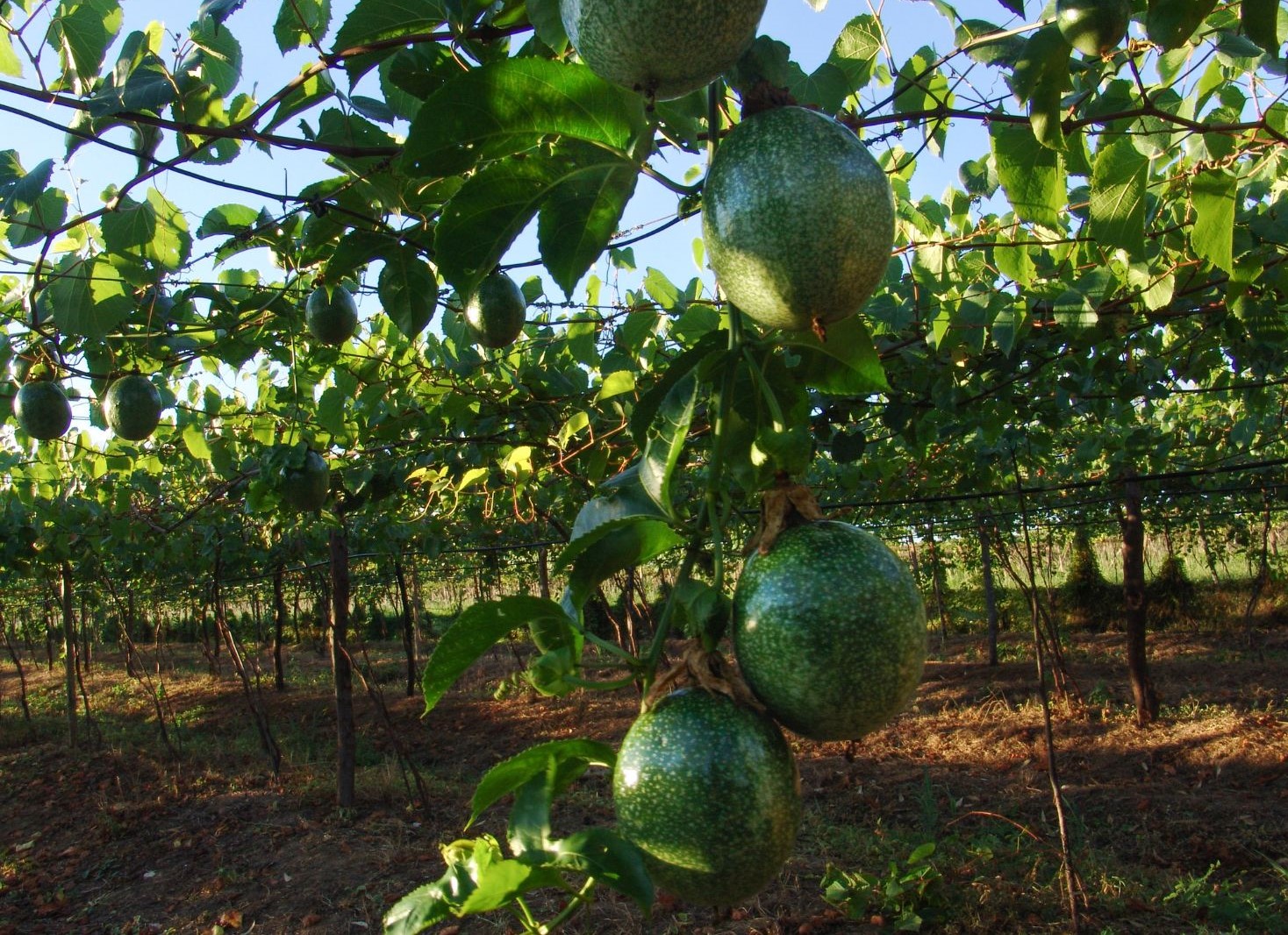Passion Fruit: Soil & Climate Requirements, Land Preparation and Planting

This post is also available in:
This post is also available in:
![]() Deutsch (German)
Deutsch (German) ![]() हिन्दी (Hindi)
हिन्दी (Hindi) ![]() Ελληνικά (Greek)
Ελληνικά (Greek)
Soils and Climate Requirements of passion fruit
Passion fruit thrives in tropical and subtropical environments and frost-free climates, with high humidity and annual rainfall from 600mm to 2000 mm (USDA hardiness zones 9-11).
Generally, an average temperature of 18-28 °C (70-82 °F) is needed for good growth and yields, while temperatures below 18-15 °C (64-59 °F) can decrease both vegetative growth and flowering. High temperatures (above 32 °C or 89 °F ) can decrease flowering and fruit set.
The purple-type passion fruits and some hybrids are tolerant to lower temperatures (relatively frost tolerant for a short period).
The yellow passion fruit is a tropical plant that grows best at 0-800 m altitudes. On the other hand, the purple-type passion fruit prefers higher altitudes (1200-2000 m)
Passion vines can grow in a wide variety of soils but prefer light to heavy sandy loams of medium texture, slightly acidic to neutral (6.5-7), well-drained, and rich in organic matter soils. The yellow passion vine can tolerate alkaline soils if adequate micronutrients are added.
Site Selection for Establishing a Passion Fruit Orchard
Passion Fruit trees can successfully produce economic yields on hillsides, rocky soils, and other sites not suitable for cultivating other common crops.
Look carefully at your site and know the soil type, slope, aspect, water infiltration and drainage, frost patterns, maximum and minimum. Temperatures, length of growing season, distribution of annual rainfall, availability of water for irrigation, proximity of the water table, and wind and air circulation patterns. Most of these are beyond a grower’s control, and your planting plan must suit the site’s natural conditions. While farmers may be able to improve the soil over time, they cannot change the subsoil layers, influence the prevailing wind, or modify temperatures to any significant extent.
Land Preparation: If relying on rainfall, prepare the land early before the onset of rains and dig holes wide and deep enough for the seedling soil ball (45 cm x 45 cm x 45cm) and add topsoil mixed with compost or well-rotted manure. Soil pH should be adjusted through applications of lime (to raise the pH) or sulfur (to lower pH). For orchard planting in flat or slightly rolling terrain, the field should be plowed as deep as possible and harrowed twice until fine tilt is attained before the onset of the rainy season. To accommodate other cultural activities and ensure the straight alignment of trees, the field layout using the desired planting system, such as a square, quincunx, or triangular system, should be designed to plan the hole-digging operations.
Planting of passion fruit – Planting distances of passion fruit
Young passion vines should be placed in the field early in the growing season when rains start and after frost danger has passed.
The choice of planting distance and the pattern of a planting depend on the following factors: Cultivar, Location of the orchard (e.g., north or east facing), Soil type and depth, expected short and long-term production, Access for machinery, depending on orchard practices, etc. Passion vines are planted with a row spacing of 1.2-2.5 m (4-8 ft) and a plant spacing of 3-6 m (10-20 ft). With such distances, the plant density may vary from 600-2600 plants per hectare (240 – 1,400 plants per acre).
Root-pruning should be done before transplanting the seedlings. Grafted vines must be planted with the union well above ground, not covered by soil or mulch.
It is recognized that close planting can lead to disease problems and replanting after the 3rd year. After a vine of either the yellow or purple passion fruit attains 2 years of age, pruning once a year will stimulate new growth and, consequently, more flower and fruit production.
References

Further reading
- Passion Fruit: History, Uses and Nutritional value
- Passion fruit: Types-Varieties of Passion Fruit and Plant Characteristics
- Passion Fruit: Soil & Climate Requirements, Land Preparation and Planting
- Propagation and Trellising of Passion Fruit plants
- Training and Pruning of Passion Fruit Plant
- Passion Fruit Plant Care: Irrigation and Fertilization of Passion Fruit
- Important Passion Fruit Diseases
- Important Passion Fruit Pests
- Passion Fruit: Harvest, Yield and Storage









































































